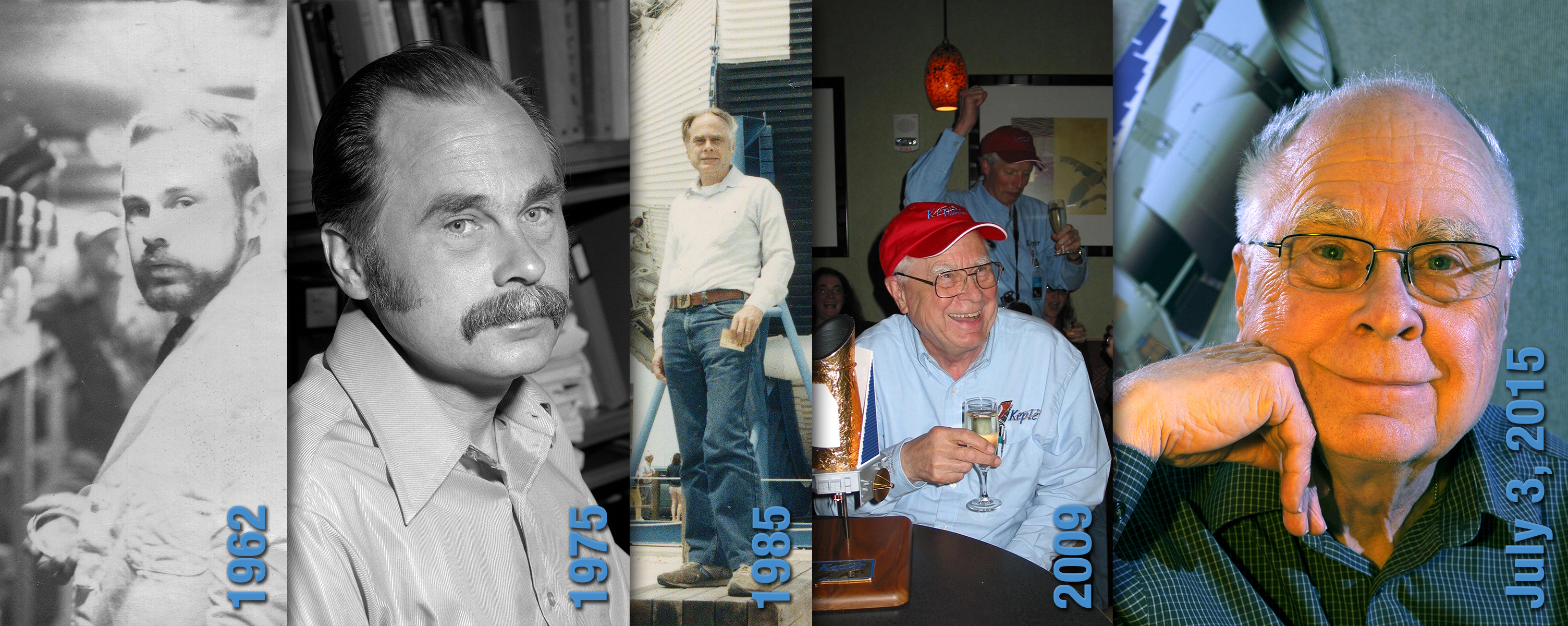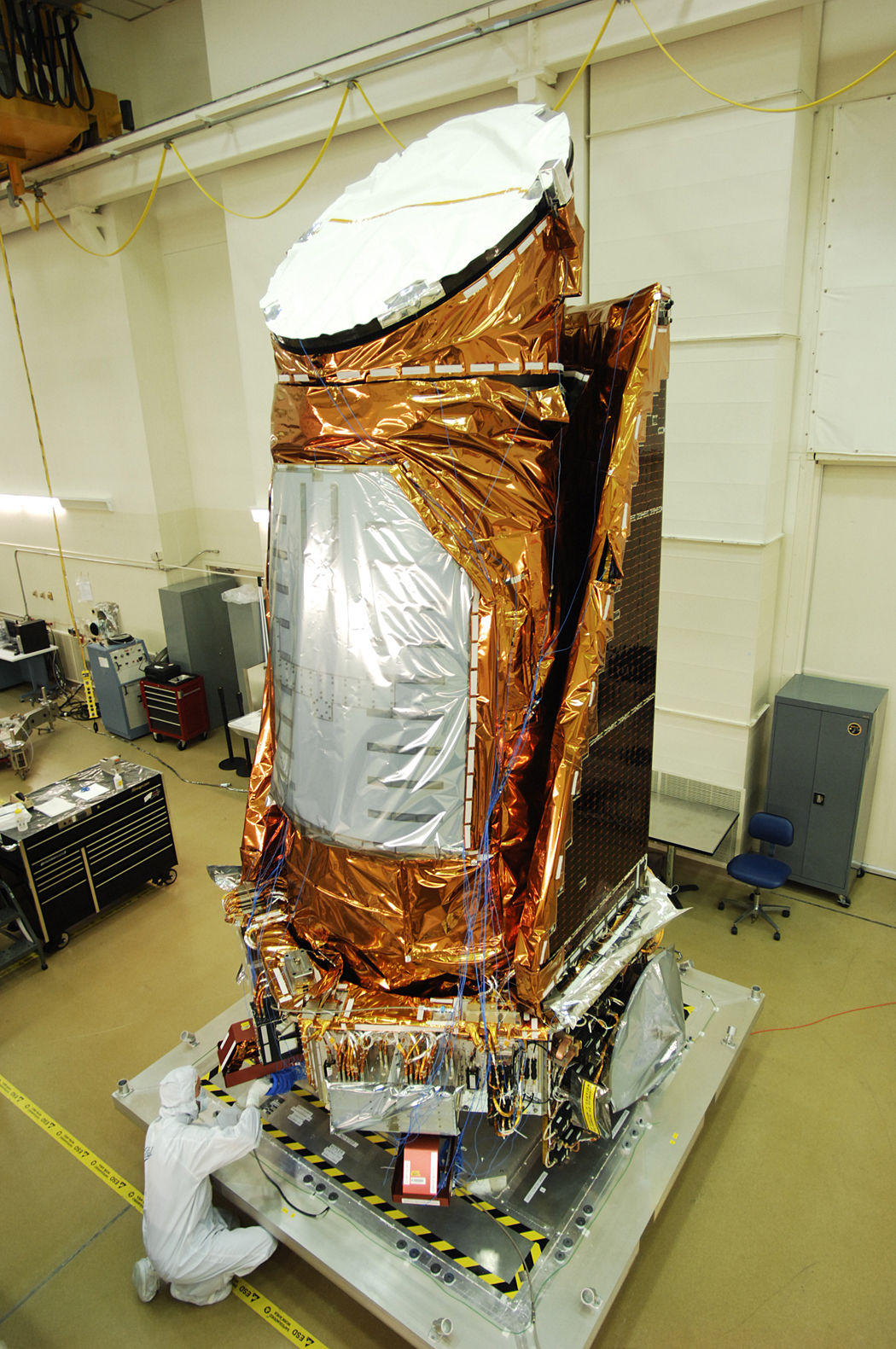
The driving force behind NASA's prolific planet-hunting Kepler mission is retiring, ending a 53-year career with the space agency.
Bill Borucki came up with the idea for the Kepler observatory in the early 1980s and continued championing the concept through four failed proposals until the mission was finally approved in 2000. He is stepping down from NASA today (July 3), agency officials said.
"Bill's unique leadership, vision and research tenacity has and will continue to inspire scientists around the world," former astronaut John Grunsfeld, head of NASA's Science Mission Directorate, said in a statement. "He retires on such a high note that he leaves a legacy of inquiry that will not only be celebrated, it will be remembered as opening a new chapter in the history of science and the human imagination." [Gallery: A World of Kepler Planets]
The Kepler spacecraft, which launched in March 2009, finds alien planets by noting the tiny brightness dips caused when these bodies cross their host stars' faces from the telescope's perspective. The $600 million mission has discovered more than half of the 1,900 or so exoplanets known to date, and it has shown that rocky, Earth-like planets are extraordinarily common across the Milky Way galaxy.
This success was hard won. For years, Borucki (who was based at NASA's Ames Research Center in Moffett Field, California) and his team fought doubters who didn't believe the team could build a spacecraft sensitive enough to detect faraway exoplanet "transits" while staring at thousands of stars simultaneously.
"The argument back then was, it could not be done, it wouldn't work, and it was by the most prominent people in the science community and the engineering community," Borucki told Space.com last year. "But we made it work. We showed there was another way mankind could explore the galaxy."

Proposals for the mission that would become Kepler were rejected in 1992, 1994, 1996 and 1998. The breakthrough finally came in 2000, after Borucki and his team had built a testbed facility to prove out the instrument's sensitivity. (They had also built, a few years ealier, a special telescope at Lick Observatory in California to address concerns about Kepler's ability to measure many stars at once.)
Get the Space.com Newsletter
Breaking space news, the latest updates on rocket launches, skywatching events and more!
"Those were joyful days of hard-earned celebration to be sure, but Bill wasn't one to pat himself on the back. The qualities that kept him moving forward in the face of rejection were the same qualities that kept him focused on the job ahead," Kepler mission scientist Natalie Batalha, also of NASA Ames, said in the same statement.
"To me, Bill embodied the essence of NASA — the childlike spirit of discovery, the tireless work ethic, and the playful tinkering and risk-taking that leads to bold innovation," she added.
During his first decade at NASA, Borucki worked on helping get astronauts to the moon and back. His research on the radiation levels experienced by spacecraft returning to Earth was used in the design of the Apollo capsules' heatshields, NASA officials said.
Borucki then spent 12 years studying Earth's atmosphere and lightning activity on other worlds before spearheading the Kepler project.
"My greatest honor has been the opportunity to develop and lead the Kepler mission. It showed the galaxy is full of Earth-size planets orbiting in the habitable zone of other stars. New and more powerful missions will tell us if the galaxy teems with life," Borucki said in the statement. "I hope that young people the world over will take up the challenge to explore our galaxy and will build missions to continue our search for life and to find our place among the stars."
Though Borucki is retiring from NASA and stepping down as Kepler principal investigator, he won't be giving up research altogether. Next month, Borucki will start another chapter as a volunteer "Ames Associate," in which capacity he'll continue studying alien worlds and planet formation, NASA officials said.
The Kepler spacecraft's original planet-hunting mission lasted until May 2013, when the second of the telescope's four orientation-mainting reaction wheels failed, robbing Kepler of its ultraprecise pointing ability. The observatory is now embarked on a new mission called K2, in which the spacecraft is searching for planets and eyeing a variety of cosmic objects and phenomena, including comets, asteroids and supernova explosions.
Follow Mike Wall on Twitter @michaeldwall and Google+. Follow us @Spacedotcom, Facebook or Google+. Originally published on Space.com.
Join our Space Forums to keep talking space on the latest missions, night sky and more! And if you have a news tip, correction or comment, let us know at: community@space.com.

Michael Wall is a Senior Space Writer with Space.com and joined the team in 2010. He primarily covers exoplanets, spaceflight and military space, but has been known to dabble in the space art beat. His book about the search for alien life, "Out There," was published on Nov. 13, 2018. Before becoming a science writer, Michael worked as a herpetologist and wildlife biologist. He has a Ph.D. in evolutionary biology from the University of Sydney, Australia, a bachelor's degree from the University of Arizona, and a graduate certificate in science writing from the University of California, Santa Cruz. To find out what his latest project is, you can follow Michael on Twitter.
